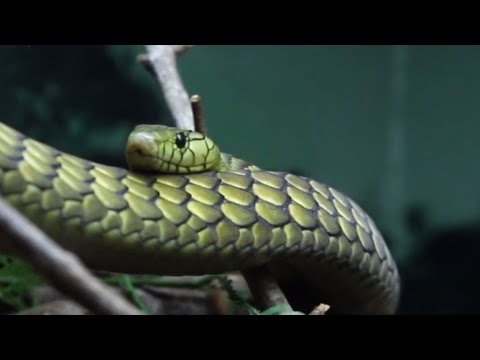- Comprehensive overview of the West African green mamba’s habitat and behavior.
- Detailed examination of the mamba’s physical characteristics and adaptations.
- Analysis of the snake’s venom composition and its implications for medical science.
- Strategies for zoo management and conservation efforts for the West African green mamba.
- Importance of wildlife conservation and public education in promoting coexistence with venomous reptiles.
The West African green mamba, scientifically known as Dendroaspis viridis, is a fascinating species that captivates biologists and herpetologists alike. Endemic to the dense forests and thickets of West Africa, this snake is an integral part of the region’s ecosystem, contributing to the control of rodent populations. It thrives in the lush, humid environments stretching from Senegal to Cameroon, often residing in the treetops. These arboreal creatures are highly adapted to life among the branches, exhibiting a remarkable agility that allows them to navigate their woody domain with precision. Their habitats are often threatened by deforestation, thus understanding their ecological role becomes vital. Protecting these habitats is crucial for maintaining biodiversity.
The West African green mamba’s striking coloration, a vibrant green that serves as camouflage among leaves, is just one of its distinctive physical features. These serpents can grow up to 2 meters in length, and their slender, elongated bodies allow for swift movements. Additionally, their smooth scales reduce friction, assisting in rapid gliding through the forest canopy. Another notable adaptation is their excellent eyesight, essential for hunting prey during daylight hours. This snake is primarily diurnal, actively seeking out birds, small mammals, and occasionally, other reptiles. The green mamba’s ability to remain virtually unseen helps it avoid predators and capture prey with stealth.
The venom of the West African green mamba is a potent neurotoxin, primarily impacting the nervous system of its victims. This neurotoxin can lead to paralysis, respiratory failure, and, if untreated, death. However, understanding the composition of this venom has substantial implications for medical science; it enables the development of antivenoms and provides insights into neurological disorders. Researchers have discovered that certain proteins in the venom can potentially have therapeutic applications, including pain management and treatment of blood coagulation disorders. Despite its dangers, the venom becomes a resource for advancing scientific knowledge and medical technology.
Zoo management of venomous snakes like the West African green mamba requires specialized strategies for both animal care and public safety. Enclosures must replicate the snake’s natural environment, providing ample climbing structures and foliage to encourage natural behavior. Zoos also play a critical role in conservation by participating in breeding programs intended to bolster population numbers. Such programs are essential, especially considering the threats these snakes face in the wild. Educating the public about the ecological importance of these reptiles can foster a greater appreciation and support for their conservation. Interactive exhibits and educational programming can demystify the misconceptions that often surround venomous snakes.
Conservation of the West African green mamba is urgent, as habitat loss continues to challenge their survival. Engaging local communities in conservation efforts can be an effective strategy. By promoting a model where people and wildlife can coexist, these initiatives can affect cultural perceptions and lead to sustainable practices. Educating communities on the ecological benefits that snakes provide, such as control of pest populations, helps mitigate unwarranted fear and hostility. Efforts to incorporate traditional ecological knowledge with modern conservation strategies can strengthen the impact of these programs, ensuring the conservation of the mamba and its habitat for future generations.
In conclusion, the West African green mamba is not only fascinating due to its behavior and adaptations but also because of its role in the ecosystem and its contribution to scientific advancements. Through effective zoo management, conserving natural habitats, and public education, the continued survival of this intriguing species can be supported, showcasing the importance of biodiversity and the delicate balance of natural systems. Maintaining ecological diversity ensures not only the survival of species like the green mamba but also the health and resilience of the environments they inhabit, underlining the vital need for comprehensive wildlife conservation efforts.
*****
Source Description
Say hello to the beautiful West African green mamba, now at the Herpetarium. 🐍


